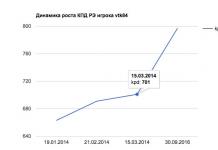Users of the World Wide Web often encounter the problem of heavy load on the current connection, but they themselves perform minimal actions on the network. The reason for this may be the connection of one of the installed programs. Today, there are many different utilities that quickly determine which programs are connected and using the Internet, but most of them are paid. The standard set of Windows programs has a free analogue that allows you to quickly find out information about the use of the connection. To check you will need:
— A computer with Windows OS (Order from us for your needs with an already installed operating system);
— Net Stat program.
Instructions
- Click the "Start" button and select "Run", you can also use the keyboard shortcut Win+R. In the window that loads, you need to enter the netstat command with the addition “/?” (without quotes), press Enter. A window will open with a list of all possible launch modes for this utility. You may find the following useful:
- "-a" - displays all current connections;
- "-o" - shows the identification code of the existing active connections or Process ID.
- “-n” - this parameter replaces the used aliases with real IP addresses.
Video: How to find out which applications are consuming Internet traffic
Question from a user
Hello.
Tell me, how can I find out which programs are loading my Internet channel? The fact is that although I have unlimited traffic, I have a very slow speed tariff (only 500 KB/s, i.e. every kilobyte counts).
Previously, my torrent always downloaded at a speed of about 500 KB/s, but now something happened, as if someone was eating up my traffic. What can be done?
Good day.
Let's hope that Elon Musk will quickly launch his free high-speed satellite Internet and cover the whole Earth with it...
In general, your question has some background: the fact is that the decrease in speed could not have occurred due to the fact that some program began to secretly use your network (although this is also possible) ...
Therefore, in this article I will show not only how you can find a program that “steals” traffic unnoticed, and how to limit its “appetites”, but I will also point out those points that may also be the cause of the load on the network. So...
Let's find out what programs and services the network is loaded with
Method number 1: through the task manager
If you have Windows 10, then in the task manager you can immediately find out in the same window the CPU load, memory, disk, and network load (which is very convenient!). For example, in the screenshot below, applications are sorted depending on the network load: as you can see, the main source is Utorrent...
Note: to open the task manager, use the Ctrl+Alt+Del or Ctrl+Shift+Esc key combination.

But in general, of course, I agree with many that the task manager is not informative and often does not show the whole picture. In addition, there are no options for limiting or fine-tuning network use.
Method No. 2: special. utilities
In general, there are quite a lot of similar utilities. Every other firewall will also be able to show you which applications are accessing the network. However, in this article I want to focus on one very skillful utility - NetLimiter!
One of the best programs for monitoring network traffic. After installing the program, it monitors absolutely all applications accessing the Internet.
With its help, you can manage traffic (limit it, block it) for each application separately.
In addition, NetLimiter keeps statistics on all connections, and you can always turn to the utility to view graphs and tables.
After installing and launching NetLimiter, click on the "DL Rate" column and you will see all the most "gluttonous" programs (in terms of traffic) at the moment. An example is shown in the screenshot below: as you can see, the lion's share of traffic is used by Utorrent.

NetLimiter - sorted by download traffic
In general, by carefully reading the list of programs presented in NetLimiter, you will find out which applications load your network and “zero” traffic. Below we will look at how you can limit the appetites of a program.
How to limit the download/upload speed of any program on the Internet
Let's say that in the list in NetLimiter you found that "sinister" program that eats up all your traffic. For my example I will take Utorrent and I'll limit its download speed .
Please note that NetLimiter has a special columns with "Limit": DL - download speed limit, UL - upload speed limit. Each application already has a basic limit of 5 KB/s - if you check the box for such a limit, the speed of the selected application will be limited to 5 KB/s...

Let's say I want to limit the download speed of Utorrent to 100 KB/s (after all, the default 5 KB/s is not always suitable).
To begin, right-click on the program and select “Add rule” from the pop-up menu. See example below.

Note: Pay attention to the "Direction" column. By default this column is "In" - i.e. incoming download traffic. It is possible to select "Out" - i.e. outgoing (upload speed), and also limit it.

Speed limit limit (IN means incoming traffic, OUT means outgoing)
Please note that Utorrent is now reflected in the general NetLimiter table with a checkbox for a limit of 100 KB/s.

Download limit set
I’ll show you a screenshot (see below) for a visual representation from Utorrent itself - the total download speed of all added torrents does not exceed 100 KB/s (despite the presence of a large number of seeds and high-speed Internet access).

After the “cherished checkbox” was unchecked in NetLimiter, the download speed immediately began to increase (see screenshot below). Those. The program very effectively allows you to limit and “regulate” the speed of application access to the network.

A few words about the router, provider, and the Utorrent program itself
I would like to draw your attention to the fact that all of the above settings may not give a practical result, and your Internet speed will leave much to be desired. Why?
1) There may be problems with the provider
It’s not uncommon for download speeds on Utorrent to drop due to a problem with the provider (for example, you may be switched to an emergency branch while the main one is under repair).
In addition, if your provider has quite a lot of clients in your home/area, it is possible that, for example, in the evening hours you will see “drawdowns” in download speed (the fact is that in the evenings and on weekends the majority of people go online , and there is not always enough bandwidth for everyone...).
To help! How to find out the Internet speed on a computer -
2) Pay attention to the router (and other devices that you have connected to the network)
If you have several devices connected to the Internet (for example, in addition to a PC, you may also have a laptop, phone, tablet, etc.) - pay attention to them too.
Pay attention to the router (if you use one): as a rule, in its settings you can find out which devices are connected to it, how they use the network, etc. There you can often limit the appetites of any of the devices connected to it.
For reference! Detailed installation and configuration of the router:

Router operation status: how many devices are connected, what is the download and upload speed // TENDA
3) Pay attention to the Utorrent program itself
It is worth recognizing that sometimes Utorrent is a very capricious program that may simply “refuse” to download a file at normal speed... There can be many reasons for this: either the wrong version of the program was selected or the optimal settings were not specified.
I have several blog articles dedicated to this topic. Therefore, if you have checked and configured all of the above, but there is no result, I recommend that you familiarize yourself with a couple of materials, the links to which are indicated below.
Why uTorrent downloads at low speed: torrents take a very long time to load -
Analogues of uTorrent: select a program to download torrents -
Additions are welcome.
Anyone who uses the Internet should be aware that their computer is in constant danger of being infected by malware that surreptitiously connects to the Internet. Various types of spyware and Trojans use your Internet connection to transmit your personal information to an attacker. Your computer can also become part of a botnet network, and subsequently execute various commands of the attacker without your knowledge.
One way to protect against unwanted Internet connections is a two-way firewall (firewall/firewall), which controls both incoming and outgoing traffic. However, most average users have a firewall installed that only inspects incoming traffic. So if such a user’s computer becomes infected not through the network, but, for example, through an external drive, then there is a high probability that the user will never know about it.
There are also a number of programs for analyzing network activity, but most of them require technical knowledge in the field of networking, which the average user clearly does not know.
Fortunately, there are several simple methods that do not require the user to have any serious knowledge or complex analytical calculations. This article will discuss one of these methods. He won't ask anything special from you. Everything you need is already in the Windows operating system itself. However, please note that this method will not replace full-fledged tools for network analysis, but it still provides quite useful information that a user of any level can master.
Using the "netstat" command to check Internet activity in Windows
All current versions of Windows come with a number of networking tools that run from the command line (see this article for more information on using the command line). One such tool is the "netstat" command, which provides a number of functions for analyzing network traffic. More experienced users can familiarize themselves with the full list of parameters and capabilities of the command by running it with the "/?" parameter. (i.e. without the quotes "netstat /?"). This tip uses netstat as a quick and easy way to view all active connections.
- Open a command prompt. Windows Vista/7 will require administrator rights (see)
- Type "netstat -b" (without quotes)
You will see the entire list of connections that are connected to the Internet. Since this list can be very long and will not fit on one screen, we advise you to also read the article about redirecting output to a .

You can also display a list of connections, which will display not the domain names of the recipients, but their IP addresses. To do this, you need to add the character "n" to the parameter, which will switch the display. Taking this into account, step 2 takes the following form:
- Type "netstat -nb" (without quotes)
GUI for NetStat on Windows

If you have trouble accepting information from the command line, or you are simply accustomed to using a graphical interface, then there is good news for you. There is a free program called "TCPEye". The program displays information in real time, so you don't have to run a scan every time or perform any additional actions. Plus, TCPEye provides a number of additional functions, such as displaying the country of the destination address, which will make the information more accessible to perception.
Note: Despite the availability of various third-party applications for viewing network traffic, you should still be able to deal with problems using standard means in the event of an emergency. Plus, you won’t always have the opportunity to use such utilities.

- Several convenient mouse and keyboard combinations in Windows
Technical Tips
How do you know which programs in Windows have made or accepted connections to the Internet? Some programs may tell you information directly, while others may not show you that information. This is especially common for shady applications and those that are downright harmful, and sometimes you need to look at network connections to the Internet to analyze applications connected to the world wide web. One option you have is to configure your software or hardware to only allow connections to programs that you have verified on a case-by-case basis. If you just want to get the online status of programs connected to the Internet, you can use various internal and third-party tools to do this.
Team Netstat will check sanitized Internet applications
One of the simplest options is to use the command netstat in an elevated command prompt. The command lists executable files, ports, local and external IP addresses, and status in a list. You can see at a glance which programs have created connections, so you can quickly find the malicious one.
- Open a command prompt as administrator and type netstat -bona. You can also enter netstat, netstat -b,(o, n, a).
- b - displays the executable file associated with creating the connection.
- o - Displays the ownership process ID.
- n - displays address and port numbers.
- a - displays all connections and listening ports.
Find out which programs are using the Internet using PowerShell
You can also use Powershell and it offers some interesting options.
- Launch PowerShell as administrator and enter the command $nets = NetStat. This stores the Netstat output in $variable networks.
- Next enter $nets | select-string "Established" to display only established connections.


























